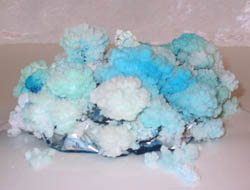Hello,
Our Kids Science Newsletter is published each month. The newsletter includes a question of the month, current science events, and a simple science activity that is fun for kids of all ages.
Question of the Month
What is a tidal bore?
(answer follows the simple science experiment)
Science Current Events
- Wild Wolf Enters California
- A lone wild wolf entered California on December 29th. The lone wolf has been tracked for months in Oregon. He is the first known wild wolf to live in the state since 1924. The wolf has been traveling for months searching for other wolves to establish a pack. He is living in the rugged California-Oregon Border. Biologists are tracking the animal using a radio collar. He is a young male looking for another pack or a mate so he can establish a pack.
- NASA Probes Orbiting The Moon
- After a 3.5 month journey two Moon probles are orbiting the Moon. The Grail-A is the 110th mission to target the Moon since the dawn of the Space Age. The first space probe by the United States landed on the Moon in 1966. Neil Armstrong walked on the Moon on July 20, 1969. The last Apollo manned flight reached the Moon on December 19, 1972. It was seven years later, in 1979, that marine scientists descovered an entire new ecosystem at the bottom of the Pacific Ocean around "Black Smokers."
- 100 Years Ago South Pole Reached
- Roald Amundsen, a Norwegian, and his team were the first expedition to reach the South Pole on December 14, 1911. Amundsen and his party started on their journey on October 11, 1911. The party skied across the Frozen Ross Sea and climbed 9,800 feet to the surface of the Antarctic Pleateau to reach the pole. They used skies to travel and sled dogs to carry their supplies. Robert Scott, a rival British explorer, and his party reach the South Pole a month later. He and his four companions died on their return trip because of broken equipment and starvation.
Science Trivia
- You can vaporize a diamond by heating it to 1405 degrees Fahrenheit.
- Ants can make themselves explode when they are attacked.
- A beefalo is part bison and part cow.
- Dragon flies can see in all directions at the same time.
- You can keep honey on the shelf for years because it never spoils.
- The bumblebee bat weighs about the same as 2 M&Ms. It is the smallest mammal.
- Ancient Egyptians removed the brains of a person through their nose when they were mummifying them.
- Crickets "hear" sound through their knees.
Simple Science Activity
Crystal Garden
Introduction
Water is a universal solvent on Earth. In this activity when the water evaporates it will form a crystal garden of salt as the dissloved minerals in the water begin to crystallize.

Materials
- Table salt
- Bluing (found in the laudry section of your supermarket)
- Water
- Ammonia
- Blue food coloring
- Tinfoil
- Measuring spoons
- Small plastic plate
- Twigs, pieces of sponge, etc (optional)
Directions
- Crumple a 12-inch square of tinfoil so it fits on the plate.
- Sprinkle 1 tablespoon of salt onto the tinfoil.
- Mix together in a cup 4 tablespoons of salt, 4 tablespoon of bluing and 4 tablespoons of water.
- Add 1 tablespoon of ammonia to the solution.
- Spoon the solution over the crumpled tinfoil.
- Make sure the salt solution remains in cavities of the crumpled tinfoil.
- You can also add twigs, pieces of sponge and other items on the tinfoil if you would like.
- Sprinkle the blue food coloring over the solution and the tinfoil.
- Place the plastic plate on a shelf when it can be observed for several days.
- More solution can be added if needed to increase the growth of the crystals.
Science behind the experiment
Rainwater flowing into inland lakes carry minerals that dissolved out of rocks when they weather. Inland lakes without an outlet become concentrated with these minerals when water evaporates. Eventually the chemicals in the lake water become supersaturated and begin to precipitate out as chemical rocks on the lake bottom. The salt crystals in this activity grew when the water evaporated out of the solution.
Answer to the question of the month
What is a tidal bore?
A tidal bore is a wall-like wave of water that moves inland or upriver as the tide is rising. The incoming tidal current surges against the flow of a narrow bay, river or estuary. The wave of water can reach heights of 10 to 16 feet and it flows rapidly during the incoming tide at a speed of about 10 to 15 knots per hour.
Please share the newsletter
Please share this newsletter with a friend by forwarding it to them. If you know of a group who might enjoy the newsletter please let them know about it also.
Comments? Ideas? Feedback? I'd love to hear from you. Just reply to this Just For Kids Science Newsletter and tell me what you think!
Sincerely yours,
Myrna Martin
Websites:
www.RingofFireScience.com
www.Kids-Fun-Science.com
www.Kids-Earth-Science.com
www.The-Science-Site.com
|



